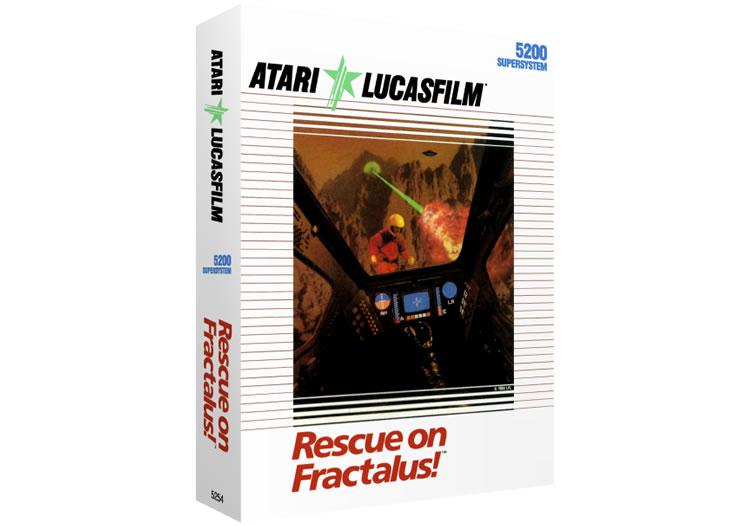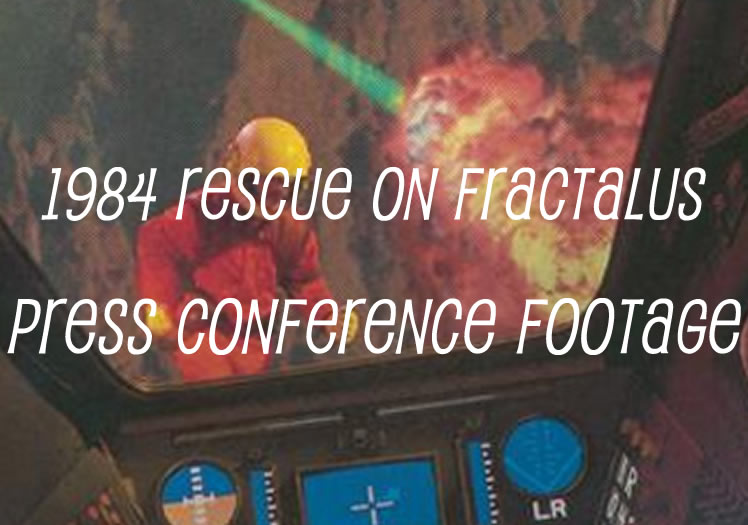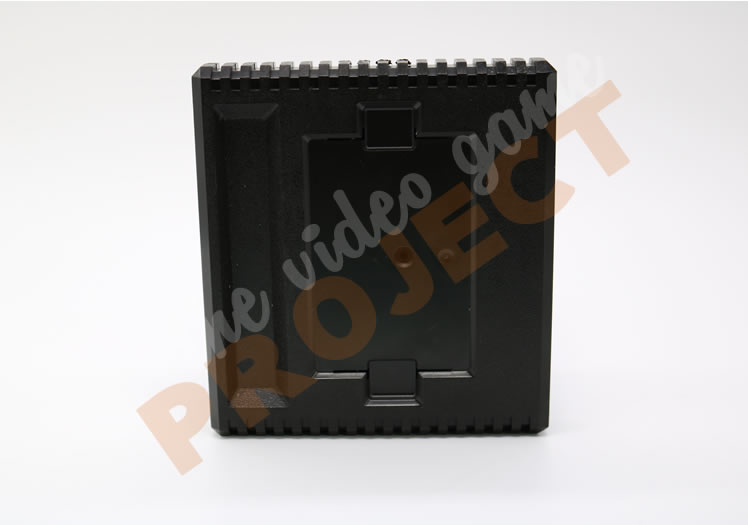The Video Game Project
A Closer Look At The Prototypes That Became Your Favourite Games!
Rescue On Fractalus
 Originally created under the working title of Behind Jaggi Lines, referring to the Jaggis, the fictional race of hostile aliens in the game, as well as the lack of spatial anti-aliasing in the game's graphics, known as "jaggies", Rescue Of Fractulus was designed by David Fox, Gary Winnick, Charlie Kellner, Loren Carpenter, and Peter Langston. One of two titles published by LucasFilm as part of their partnership with Atari (the other being BallBlazzer) the game was released in 1984. Created in the Atari 5200's golden years, the alliance was sadly short lived but LucasFilm did go on to release other games under their own brand.
Originally created under the working title of Behind Jaggi Lines, referring to the Jaggis, the fictional race of hostile aliens in the game, as well as the lack of spatial anti-aliasing in the game's graphics, known as "jaggies", Rescue Of Fractulus was designed by David Fox, Gary Winnick, Charlie Kellner, Loren Carpenter, and Peter Langston. One of two titles published by LucasFilm as part of their partnership with Atari (the other being BallBlazzer) the game was released in 1984. Created in the Atari 5200's golden years, the alliance was sadly short lived but LucasFilm did go on to release other games under their own brand.
LucasFilm's Games Group was actually conceived directly by George Lucas. He had a clear vision for the future, so a small group of designers, programmers, and artists were ensembled with the sole intention of getting them to do for video games what his visual effect team had been doing for movies and take them to the next level. That newly created section of the computer division was establish as early as March of 1982 with the hiring of Peter Langston and LucasFilm signing a profitable licensing agreement with Atari. Langston then went on to immediately interview and bring in several members to be part of the team.
One of those people, Games Group designer David Fox, found himself sharing a work area with Loren Carpenter of Lucasfilm’s computer graphics division. Loren was a graphics expert and was largely responsible for creating the ‘Genesis Effect’ visuals seen in Star Trek II: The Wrath Of Khan. David began discussing with Loren, who was not actually directly involved with the Games Group, if he believed that there was any chance that fractally generated mountains could be recreated on a microcomputer. Loren borrowed an Atari 800 and took it home. In a few days he taught himself 6502 assembly language, how the Atari handled graphics, and managed to come back with a functioning demo! Not only that but he had achieved a real-time fractal-generated mountain range within the limitations of the Atari’s primitive resolution and 48K of memory.
Inspired by Carpenter's demo, David began assembling ideas for how these fractal landscapes could be applied to a videogame. A Star Wars fan even before he began working at Lucasfilm, Fox was intent on constructing an experience that would stand up to scrutiny alongside the legendary blockbusters of George Lucas. He wanted to transport the player inside the Star Wars universe and as such the game would become a flight-sim styled first person pov (point of view) game, with the player controlling something that closely resembled an X-Wing Starfighter searching for immobilized pilots between the unfliendly mountainous terrain. Ironically Lucas Films had already sold the rights to use the Star Wars likenesses in home and arcade videogames to Parker Brothers and Atari in a very lucrative deal, so financially it didn’t make sense for them to also use their own movie licence for internal productions. "Any similarities between this game and the rescue scene on the ice planet Hoth are purely coincidental”
From the beginning, that initial small group of people (Lucas Film Game Group) set about creating game development tools and picking up a couple of "throwaway" games to use as test cases and proof of concept. These tools allowed them to develop directly on Unix workstations and download the binaries to the actual target hardware, something that was virtually unheard of at the time and in 1983 LucasFilm showed early versions of their first two games to Atari.
Known at the time as "BallBlaster" and "Rebel Rescue" Atari were very impressed with their efforts and held onto copies of the games for themselves. It isn't expressly known who leaked them but soon pirated versions of their early game builds began appearing on online bulletin boards. Despite only being available in pirated form, their games received very positive reviews from the public. With that excellent feedback at hand LucasFilm officially delivered the final versions of BallBlazer and Rescue on Fractalus to Atari in May of 1984. A big press conference was held on the 9th to announce their release.
You'd probably expect with all positive publicity the game received that Atari would have jumped at the chance to honor their agreement with LucasFilm and release the home computer (Atari 800) and game machine (Atari 5200) versions of the games. Sadly this wasn't the case and Atari decided to initially make the games 5200 exclusive. For over two years the only way to play these games on your Atari 800 was to download pirated versions from those previously mentioned online bulletin boards. After receiving more positive reviews (this time from the press) Atari decided to change the goalposts once more. Their management structure had changed and hoping to get more money from the deal, the new management team decided to try renegotiate the contract. Ultimately this brought the original Atari/Lucasfilm collaboration to an end. On a positive note (for LucasFilm at least), in 1986 BallBlazer and Rescue on Fractalus were finally officially released on disk for the Atari 800 home computers by Epyx.

Proto - Front

Press Footage
